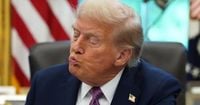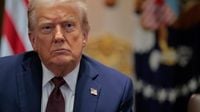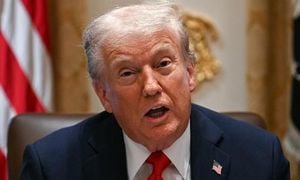The U.S. job market, once a point of pride and political leverage, has entered a period of marked uncertainty under President Donald Trump’s second term, with the latest economic indicators painting a picture far removed from the robust growth promised on the campaign trail. Friday’s jobs report, released on September 5, 2025, revealed that employers added just 22,000 jobs in August—a number so low it startled economists and policymakers alike. The unemployment rate ticked up to 4.3%, and revised data for June exposed a net loss of 13,000 jobs, the first such decline since the depths of the COVID-19 pandemic in December 2020, according to the Associated Press.
This abrupt slowdown has not gone unnoticed or unchallenged. Factories and construction firms, once the backbone of Trump’s economic vision, have been shedding workers at an alarming clip. Since April, manufacturers have cut 42,000 jobs, while builders have trimmed 8,000 positions. The logging and mining sectors—including oil and natural gas—have lost 12,000 jobs since January, and the Energy Information Administration estimates that U.S. crude oil production will fall by 100,000 barrels per day in 2026. These numbers stand in stark contrast to Trump’s repeated assurances that “jobs and factories will come roaring back into our country.”
Yet, as the numbers falter, the White House’s message has shifted from one of immediate triumph to a plea for patience. “We’re going to win like you’ve never seen,” Trump declared on Friday. “Wait until these factories start to open up that are being built all over the country, you’re going to see things happen in this country that nobody expects.” He also pointed to new facilities for artificial intelligence development, promising that these would deliver “jobs numbers like our country has never seen before” within a year. But for many Americans, the wait is growing long, and economic anxieties are mounting.
Polling data underscores this shift in sentiment. Approval of Trump’s economic leadership, which soared to 56% in early 2020, had dropped to just 38% by July 2025, according to The Associated Press-NORC Center for Public Affairs Research. The erosion of confidence is especially acute among groups Trump once courted with promises of prosperity. For example, the Black unemployment rate has climbed to 7.5%, its highest level since October 2021, even as Trump has argued that deporting immigrants would protect “Black jobs.”
Inflation, too, has reared its head again. Consumer prices have climbed from a 2.3% annual increase in April to 2.7% in July, while electricity costs are up 4.6% so far this year. Despite Trump’s campaign pledge to “end” inflation on “day one” and halve electricity prices within a year, the reality has been far less rosy. The White House maintains that the economy is on the verge of breakout growth, with new tariffs and import taxes projected to raise hundreds of billions of dollars annually—provided they survive ongoing legal challenges.
But these very tariffs have drawn sharp criticism from across the political spectrum. The Wall Street Journal’s editorial board, in a pointed rebuke published September 5, blamed Trump’s tariff policies for damaging the very industries he vowed to protect. “Tariffs are taxes, and taxes hurt economic growth,” the editorial stated. Citing figures from the latest jobs report, the Journal noted that manufacturing lost 12,000 jobs in August and a staggering 38,000 jobs in 2025. The paper also highlighted that job gains were mostly limited to social assistance and healthcare—sectors heavily reliant on government spending—while the rest of the economy has “stalled.”
Since Trump’s “liberation day” tariffs were rolled out on April 2, 2025, average monthly job gains have plummeted to just 27,000, compared to 167,000 per month during former President Joe Biden’s last year in office. The Journal called for the Supreme Court to rule on the legality of Trump’s tariffs, after a federal appeals court determined that he lacked the authority to impose them under the International Emergency Economic Powers Act. “The best news for the economy would be if the Court takes up his challenge and finds them unconstitutional,” the editorial concluded, adding, “That tariff golden age is still over the horizon.”
Within the administration, frustration and finger-pointing have become more common. Trump has blamed Federal Reserve Chair Jerome Powell for not cutting interest rates aggressively, insisting that lower rates would spur job growth—though economists warn such moves could further stoke inflation. Trump even fired the head of the Bureau of Labor Statistics last month after a massive downward revision in the July jobs report, alleging that the data was manipulated to embarrass him. Michael Strain of the American Enterprise Institute observed, “The president clearly stated that the data were not trustworthy and that the weakness in the data was the product of anti-Trump manipulation. And if that’s true, what are we being patient about?”
On Capitol Hill, Democrats have seized on the disappointing jobs data as evidence of failed economic stewardship. Senate Minority Leader Chuck Schumer described the situation as “a blaring red light warning to the entire country that Donald Trump is squeezing the life out of our economy.” Senator Angela Alsobrooks (D-Md.), appearing on MSNBC’s All In with Chris Hayes, labeled Trump’s economic record “a disaster” and highlighted “plummeting jobs numbers.” She also discussed her efforts to hold other political figures accountable, but her sharpest words were reserved for the administration’s handling of the economy.
Meanwhile, the impact of Trump’s immigration policies has been felt on the ground. In early September, a high-profile immigration raid at a Hyundai electric vehicle manufacturing site in Georgia led to the detention of approximately 475 people, according to a Homeland Security official. This incident, emblematic of Trump’s aggressive crackdown on undocumented workers, has added to concerns about labor shortages in key industries—an issue that some conservative economists, like Stephen Moore of the Heritage Foundation, see as a “good problem to have.” Moore argued, “The problem going forward is a shortage of workers, not a shortage of jobs.”
Not all observers are convinced that the jobs report will define Trump’s political fate. Pollster Frank Luntz suggested that voters are more focused on inflation and affordability than on raw job numbers. “That’s what the public is watching, that’s what the public cares about,” he said. Luntz noted that Trump still has roughly a year to demonstrate progress, with the real test coming by Labor Day 2026, ahead of the midterm elections. “It’s still up for grabs,” he remarked. “The deciding point will come Labor Day of 2026.”
As the administration presses forward, it faces mounting legal and political challenges. Trump recently signed an executive order to rebrand the Department of Defense as the Department of War, a move aimed at projecting American military strength but one that has drawn its own share of controversy. At the same time, the fate of his signature tariffs—and, by extension, his economic legacy—now rests with the courts.
For now, the gap between promise and performance remains wide, and the path forward for the U.S. economy is anything but clear. As Americans weigh the competing narratives and await tangible improvements, the stakes—both economic and political—could hardly be higher.





